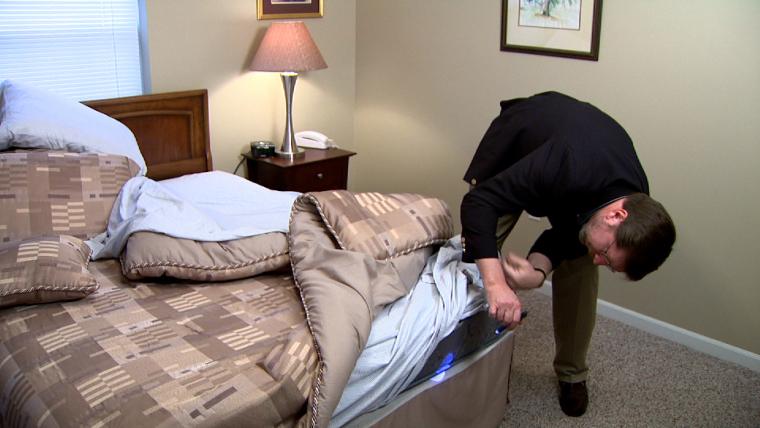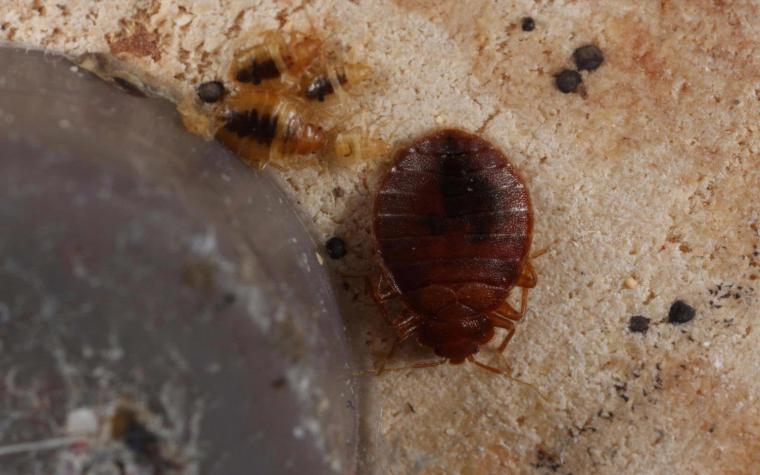COLUMBIA, Mo. – “Don’t let the bedbugs bite this summer!” says University of Missouri Extension urban entomologist Emily Althoff.
Althoff suggests taking precautions so bedbugs don’t hitch a ride home with you after you’ve enjoyed traveling.
Bedbugs are not the result of poor hygiene, as commonly thought, she says. They’re happy to tag along wherever you go. You can find them in four-star resorts and dives, and in spotless, uncluttered homes as well as filthy hovels. They move from apartment to apartment, building to building, looking for their next meal.
“The Return of the Bedbugs,” MU Extension educational video.
Bedbugs are nocturnal groupies that huddle together and scurry from light. They hide by slipping their flat, reddish-brown bodies into luggage, clothing and furniture.
These parasites feed on human and animal blood. Many times, people don’t even realize they have been bitten since bites can take up to 14 days to appear. The U.S. Centers for Disease Control and Prevention say that bedbugs inject fluids that prevent a person from feeling the bite immediately. Bites itch and appear as raised, red clustered welts.
You can’t identify a bedbug from the bite, so don’t send pictures to your doctor or your friendly MU Extension entomologist, Althoff says.
The most common bedbug species in Missouri is Cimex lectularius. It is a tiny, about the size of a grain of rice.
Extermination is expensive, so precaution is the best option, says Althoff.
She offers the following routines to avoid infestation when traveling:
• Check headboards, crevices between edges of mattresses, behind picture frames and on wallpaper. Check in and around furniture and under the edge of the carpet.
• Look for reddish stains left by crushed bedbugs on the sheets and for eggs and shed skins. You may note a lingering hint of eau de bedbug – a sweet, musty odor.
• Place luggage, purses and clothing on hotel dressers or luggage racks instead of on beds or upholstered sofas and chairs.
Also, be aware that there are risks of bringing bugs into your environment when buying secondhand items. Even a seemingly clean source may harbor bugs.
University of Kentucky Cooperative Extension Service suggests treatments for infested dwellings and items.
Related news release: Choose the right pest control provider before the bedbugs bite
Photos
Inspecting mattress for bedbugs.
Crevices in mattresses and box springs are common hiding places for bedbugs. MU Extension photo.
Bedbugs.
An adult and several nymph bedbugs hiding under the foot of a recliner. Also visible are blood and feces. Photo by Gary Alpert, Harvard University, Bugwood.org.
Videos
Bedbugs are biting again
Video news story: Bedbugs are biting again (from 2010)
The Return of the Bedbugs
Educational video: The Return of the Bedbugs


